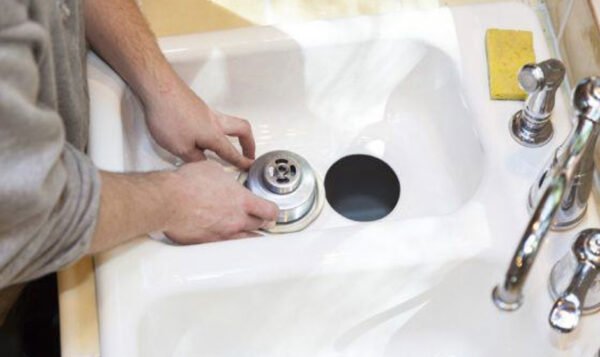Insulating Excellence: Lifetime Insights on How Long Spray Foam Insulation Lasts

As we continue to prioritize sustainability and energy efficiency, our understanding and appreciation for innovative insulation techniques have grown exponentially. Among these, spray foam insulation is a remarkable solution, offering unparalleled thermal performance, noise reduction, and moisture control.
But what exactly makes this insulation material so unique and long-lasting? In this detailed guide, we will dive deep into spray foam insulation, exploring its composition, installation process, and, most importantly, its longevity. Get ready to uncover the secrets behind the insulation material of the future and gain lifetime insights on how long spray foam insulation can truly endure.
Unmatched Durability: Why Is Spray Foam Insulation an Excellent Choice
Spray foam insulation, known for its exceptional sealing properties, does more than just insulate our homes and buildings. It lays the foundation for energy-efficient, comfortable, and durable living spaces. Investing in spray foam insulation pays dividends through immediate comfort, long-term savings, and environmental contributions. Below, we explore the many advantages of choosing this innovative insulation material.
Enhanced Energy Efficiency
High-quality spray foam insulation creates an airtight seal that substantially reduces the exchange of indoor and outdoor air. This means less strain on your heating and cooling systems, translating to significant energy savings and reduced carbon footprint.
Superior Moisture Barrier
Apart from blocking air, the closed-cell structure of spray foam insulation makes it an excellent moisture barrier. It helps prevent mold growth and water damage, ensuring a safer and healthier indoor environment.
Structural Integrity
One of the lesser-known benefits of spray foam is its ability to reinforce the structural integrity of the building. By hardening upon application, it adds strength and resistance to the walls and surfaces it is applied to.
Noise Reduction
In addition to its insulating properties, spray foam effectively dampens sound, providing a quieter and more peaceful living space by reducing the transfer of noise from outside and between different rooms and floors within a structure.
Long-Term Cost Savings
While the upfront cost may be higher than traditional insulation materials, the long-term savings on energy bills and maintenance costs make spray foam insulation an economically smart choice over time.
Improved Air Quality
The airtight seal provided by spray foam insulation is crucial in improving building air quality. By impeding the intrusion of pollutants, allergens, and other outdoor contaminants, occupants can enjoy a cleaner, fresher indoor atmosphere, contributing to overall well-being and comfort.
Environmental Preservation
Spray foam insulation’s impact extends beyond individual buildings – it is a sustainable choice that supports environmental preservation. Minimizing the energy required for heating and cooling reduces the consumption of fossil fuels and the associated greenhouse gas emissions, positively impacting climate change mitigation efforts.
Versatility in Application
Spray foam’s versatility is another notable benefit, as it can be used in a variety of settings, ranging from attics and basements to crawl spaces and walls. Its adaptability makes it suitable for new constructions and retrofit projects, providing a one-size-fits-all solution to diverse insulation needs.
Spray Foam Installation and Maintenance: Important Considerations
Installing and maintaining spray foam insulation are equally important as its inherent benefits. Certain critical steps and considerations must be observed to ensure optimal performance and longevity. This part of the guide will illuminate key factors and best practices for installing spray foam insulation and maintaining it through its lifespan.
Expert Installation Is Essential
Spray foam insulation must be precisely applied by trained professionals to reach its full potential. Good installation ensures the foam expands and cures correctly, forming the perfect airtight and moisture-resistant seal.
Adequate Ventilation during Installation
Proper ventilation is vital during the spray foam installation process to manage the fumes and off-gassing that could occur safely. Professionals are equipped to handle these aspects, prioritizing safety and efficiency.
Cure Time Observance
After application, spray foam needs adequate time to cure. During this period, keeping the treated area unoccupied is advisable to ensure no one is exposed to any uncured substance fumes.
Regular Inspections Are Recommended
Periodic inspections can help identify any issues with the insulation early on, such as unexpected shrinkage or improper application, preventing long-term problems and maintaining its efficiency.
Compatibility with Building Structure
Every building has its own architectural nuances, which means the suitability and application techniques of spray foam insulation may differ. Considering how spray foam integrates with other components in your building’s structure is crucial.
Minimizing Moisture Intrusion Before Application
Before the installation of spray foam insulation, it’s critical to address any existing moisture issues within the building. Preemptive measures such as repairing leaks and ensuring proper exterior drainage can prevent future complications with insulation performance.
Considering Seasonal Temperature Variations
The effectiveness of spray foam can vary with temperature fluctuations. Therefore, understanding the seasonal temperature variations in a particular region and planning the installation accordingly can optimize the foam’s expansion and provide a more consistent seal.
Effective Layering for Optimal Performance
To achieve the desired R-value and maximize insulation efficiency, it may be necessary to apply spray foam in multiple layers. This approach allows each layer to expand and cure properly, building up to the necessary thickness without compromising the material’s integrity.
Managing Indoor Humidity Levels Post-Installation
After spray foam insulation is installed, maintaining indoor humidity levels becomes essential. Proper humidity management not only preserves the condition of the insulation but also contributes to a comfortable and healthy indoor environment.
Long-Term Environmental Impact Consideration
When considering spray foam insulation, assessing its long-term environmental impact is important. Choosing products with low Global Warming Potential (GWP) and those that are free from ozone-depleting substances can support a greener building approach.
FAQ
Is spray foam insulation safe for my home?
Yes, spray foam insulation is safe for residential and commercial use. It is made from inert materials and does not emit any harmful gases or chemicals after installation.
How long does spray foam insulation last?
When installed correctly, spray foam insulation can last for the lifetime of a building, making it a long-term investment.
Can I apply spray foam insulation myself?
It’s not recommended to apply spray foam insulation yourself. It requires specialized equipment and training to achieve proper application, and improper installation can lead to issues with performance and potentially hazardous conditions.
Are there any health concerns associated with spray foam insulation?
When installed correctly, there are no known health concerns associated with spray foam insulation. However, following safety guidelines during installation and observing cure time is important to avoid exposure to uncured chemicals.
How does spray foam insulation compare to other types of insulation?
Spray foam insulation has a higher R-value (thermal resistance) per inch compared to other traditional insulation materials, making it more efficient in reducing energy consumption. It also provides better air sealing and moisture protection compared to other methods. However, the cost may be higher upfront.
Can spray foam insulation be used in all climates?
Yes, spray foam insulation can be used in all climates. Its effectiveness may vary with temperature fluctuations, but proper installation techniques can optimize its performance in any climate.
How is spray foam insulation right for my building?
Consulting with a trained professional and considering factors such as the building structure, climate, and budget can help determine if spray foam insulation is the best solution for your specific needs. Overall, spray foam offers many benefits that make it a viable option for many types of buildings. It’s important to do proper research and consult with experts before making a decision. With the right installation and maintenance, spray foam insulation can provide long-term energy efficiency, comfort, and protection for your building.
Conclusion
Spray foam insulation is a valuable asset for any building, providing numerous benefits such as energy efficiency, air sealing, and moisture protection. However, proper installation and maintenance are crucial for achieving optimal performance and longevity.
By considering factors such as ventilation, cure time, compatibility with building structure, and long-term environmental impact, you can ensure the success of your spray foam insulation project. Additionally, consulting with professionals and conducting regular inspections can identify any issues early on and prevent potential problems in the future.



